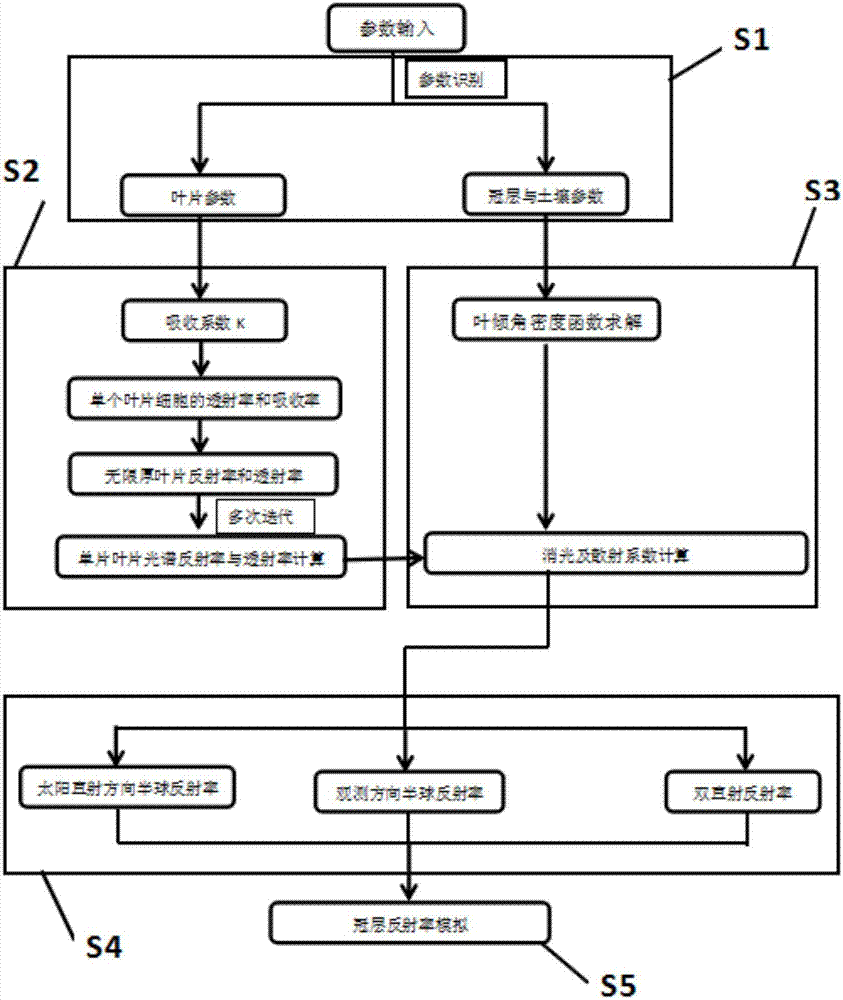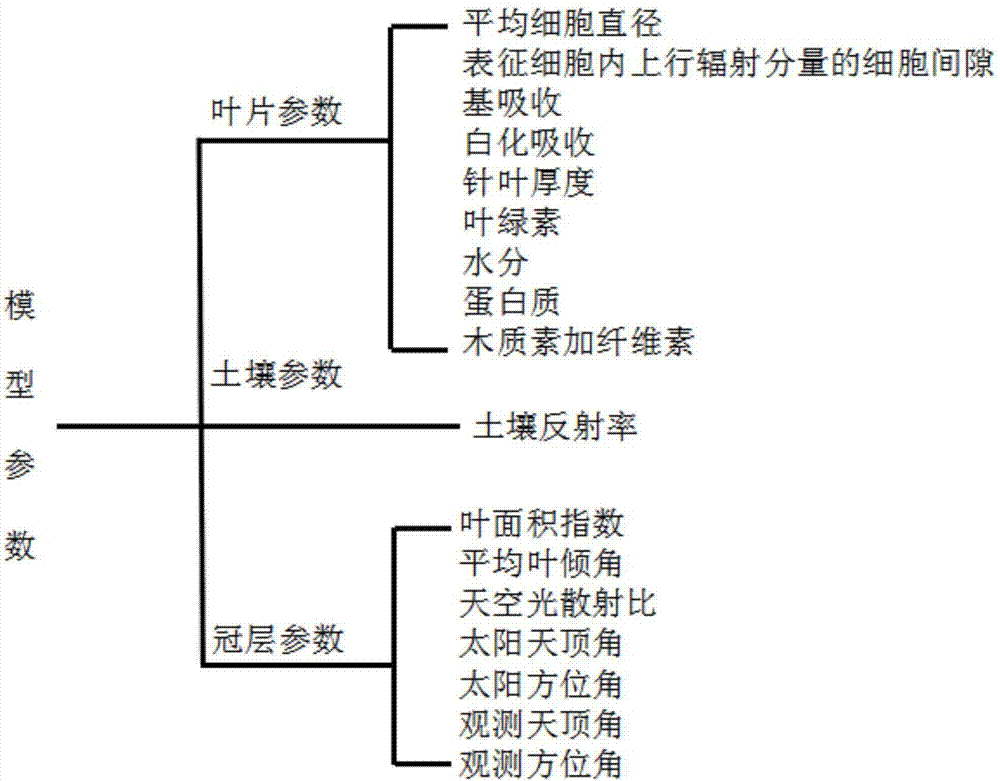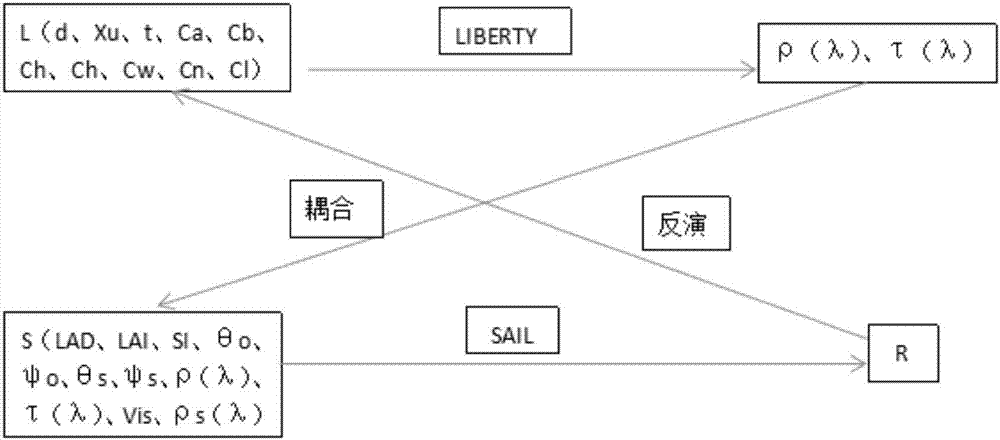Aciculignosa canopy reflectivity calculation method and model
A technology of vegetation canopy and calculation method, applied in the field of vegetation parameter inversion
- Summary
- Abstract
- Description
- Claims
- Application Information
AI Technical Summary
Problems solved by technology
Method used
Image
Examples
Embodiment Construction
[0215] The present invention will be further described below in conjunction with the accompanying drawings.
[0216] The invention proposes a coupling model of a conifer leaf model and a canopy radiation transfer model SAIL model. The model first classifies the given parameters into three parts: leaf parameters, canopy parameters and soil parameters, and then calculates the transmittance and absorptivity of a single needle cell through analysis, and then uses the layering theory to derive the given structure Spectral information of coniferous leaves under the parameters; at the same time, for the canopy parameters, the leaf type distribution elements are first calculated by using the given leaf inclination distribution model parameters, and then the extinction coefficient and scattering coefficient of the canopy model are calculated by combining the calculated geometric elements and combined with Combining the leaf shape distribution model, a complete set of canopy parameters ...
PUM
 Login to View More
Login to View More Abstract
Description
Claims
Application Information
 Login to View More
Login to View More - R&D
- Intellectual Property
- Life Sciences
- Materials
- Tech Scout
- Unparalleled Data Quality
- Higher Quality Content
- 60% Fewer Hallucinations
Browse by: Latest US Patents, China's latest patents, Technical Efficacy Thesaurus, Application Domain, Technology Topic, Popular Technical Reports.
© 2025 PatSnap. All rights reserved.Legal|Privacy policy|Modern Slavery Act Transparency Statement|Sitemap|About US| Contact US: help@patsnap.com



